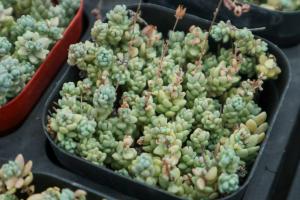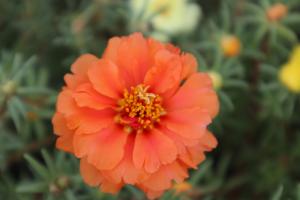Jasmine: pruning after flower

The summer with high temperature and humidity is very suitable for the growth of jasmine. If you prune it in time, jasmine will bloom again in dog days
1. If the flowers of this batch of jasmine have not been fully opened, do not carry out large-scale pruning first, just cut off the broken flowers
2. The flowering period of a single jasmine flower is one day and night. Cutting off the residual flowers and calyx can speed up the germination of new buds and bloom again
3. When all the flowers in this batch are in bloom, they can be reshaped and trimmed
4. Count up 1-2 pairs of leaves from the base of jasmine branches, and cut off all the rest on the top
5. However, according to the specific shape of jasmine plant and the length of branches, one more pair of branches and leaves or one less pair of branches and leaves can be retained
6. The pruned jasmine is kept in a well ventilated and sunny place outdoors. In summer, the temperature is high and the humidity is high. The jasmine exposed to the sun will sprout new leaves within ten days
Rose: light cut compound flower

Now the weather is relatively hot, the growth of roses is weak, and the pruning is mainly light pruning
1. Select the branches that want to blossom for pruning. The branches germinating at the main bud point are relatively strong and have large and many flowers, while the branches germinating at the auxiliary bud point are thin and weak and have small flowers. It is recommended to break them off by hand
2. Cut off the blind buds. The blind buds on the branches consume a lot of nutrients and hinder the growth of the main branches, so cut them all
3. The blind branches on the plant should also be cut off. The blind branches will not bloom, but will gradually Lignify, block other branches, affect ventilation and light, and are not conducive to the growth of rose
4. Count up three leaves from the root of rose branches, form a 45 degree angle 0.5cm above the third leaf, and cut obliquely inward. Pruning from this position can re sprout flower buds and have the effect of compound flower
5. Cut an oblique section inwards from 0.5cm above the fifth leaf. Pruning from this position can grow many flower branches, and the roses grow more vigorously
Gardenia: pruning after flower

Gardenia has strong germination ability and is very resistant to pruning. In order to make Gardenia grow better and bloom more, it must be pruned
1. After one flowering, gardenia tends to be plump, with poor internal ventilation. There are many residual flowers and leaves, which are easy to accumulate bacteria and insect eggs and need to be removed
2. In order to strengthen ventilation, the delicate branches inside Gardenia should also be cut off
3. Some small flower buds will grow on the bottom and inner thin branches of Gardenia. These small flower buds will not open, so they should also be cut off
4. The buds on both sides of the bud had better be cut off before the flower opens, otherwise it is easy to compete with the flower for nutrients. You can also cut off the flowers together with the flowers that have opened
5. After pruning, spray with carbendazim solution to avoid infection. Then put it in a sunny place for maintenance
Hydrangea: pruning after flower

Now is the best time to prune hydrangea. If you prune it after August, you won't see flowers next year
1. Hydrangea is an old branch that blooms, so the flowering branches must not be completely cut off
2. Look down along the flowering branches, find the place where the bud point grows between the leaves and branches, and cut the branches horizontally along the height of the bud point
3. In addition to pruning flower branches, abnormal flower branches on Hydrangea plants should also be cut off. This flower branch is mainly formed by insufficient fertilizer and water, so the flower buds on this branch will not open
4. Look down the deformed branch, find the stronger part of the branch and cut it off
5. After pruning, apply rotten cake fertilizer every half a month to promote the growth of branches, and harvest a large piece of Hydrangea the next year
Petunia: shaving after flower

Petunia is a flower that many flower friends like to maintain in summer. If it is not trimmed after flower, Petunia will grow and disperse, and gradually decay and die
1. When Petunia is in full bloom, it should be cut hard, so that Petunia will continue to sprout new flower buds. Cut it when it fails, and the Petunia is not far from death
2. Cut off all the long branches along the edge of the flowerpot, so that the length of the branches is almost the same, just reaching or not reaching the edge of the flowerpot
3. After cutting, you will find that there are many small branches and leaves on the branches of Petunia, and all these branches should be cut off
4. After pruning, place it in a well ventilated and sunny place for normal maintenance. In a week or so, Petunia will sprout many new leaflets
Longevity flower: pruning for summer

Longevity flower will enter the dormancy period in summer. Pruning in time after flower failure will reduce the nutrient consumption of flower branches, which is more conducive to longevity flower spending summer
1. Due to the differences of varieties, the leaf spacing on the stem is different. Some have large internode spacing and are not easy to branch, while others have small internode spacing but many branches. Therefore, it needs to be trimmed according to the specific situation
2. For long-lived flowers with large node spacing, you can count up 1-2 pairs of leaves from the root of flowering branches or where branches are dense, and cut them above the leaves
3. For the longevity flower with small internode spacing, the branches with less branches and longer branches can be selected for pruning. Compared with the longevity flower with large internode spacing, 1-2 pairs of leaves can be retained
4. After pruning, put longevity in a ventilated place for maintenance, and you can spend the summer safely
Pruning flowers in summer
That's all for Huahua~
If you still don't know how to trim flowers
You can download the flower cultivation Daquan app and upload pictures
Huahua helps you trim it~

 how many times do yo...
how many times do yo... how many planted tre...
how many planted tre... how many pine trees ...
how many pine trees ... how many pecan trees...
how many pecan trees... how many plants comp...
how many plants comp... how many plants can ...
how many plants can ... how many plants and ...
how many plants and ... how many pepper plan...
how many pepper plan...






























